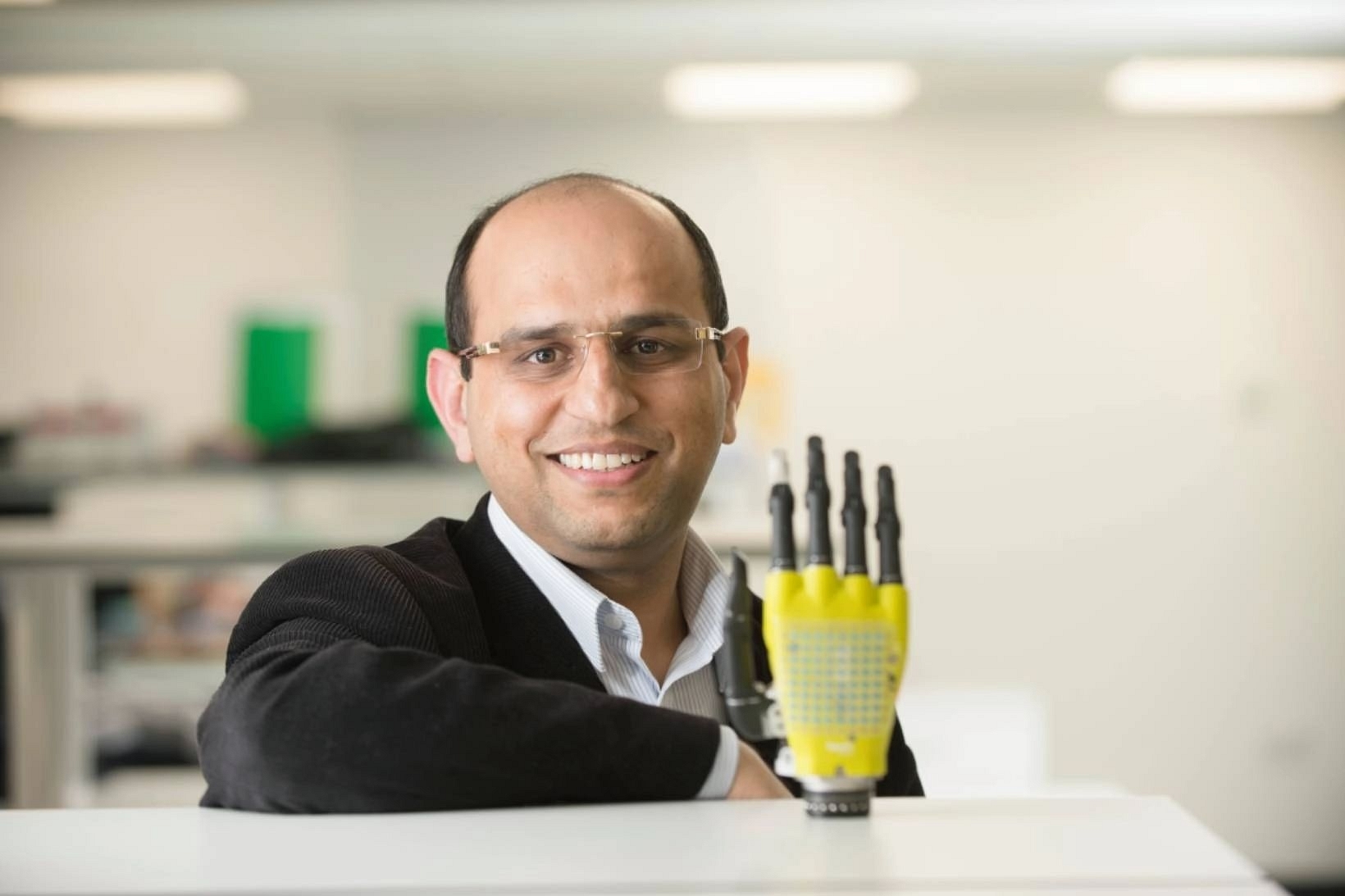Tech
Glasgow University Team Led By India-born Ravinder Dahiya Develops 'Electronic Skin’ Capable Of ‘Feeling’ Pain
- This will help to create smarter robots with human-like sensitivity.
- The technology could provide amputees with artificial limbs that restore some degree of the feeling of touch.

Prof. Ravinder Dahiya with a robotic arm with the sense of touch
A team of engineers at the University of Glasgow in the UK led by India-born Ravinder Dahiya, Professor of Electronics and Nanoengineering at the James Watt School of Engineering, has developed an electronic skin which can feel sensations like pain.
A robot hand which uses the smart skin, has shown that it can ‘learn’ to react to external stimuli. This could help create a new generation of smart robots with near-human sensitivity
More importantly it could provide amputees, with prosthetics -- artificial arms or legs -- with some semblance of the feeling of touch that they lost.
Prof Dahiya’s team shares details of their work in a paper: ‘Printed Synaptic Transistors based Electronic Skin for Robots to Feel and Learn’, published on June 1, in the journal Science Robotics.
The researchers describe how they built their prototype computational electronic-skin (e-skin), and how it improves on the current state of the art in touch-sensitive robotics.
For decades, researchers have tried to create artificial (electronic) skin which possesses the sensation of touch. The widely used method was to spread an array of contact or pressure sensors across the electronic skin’s surface to allow it detect when it comes into contact with an object. Data from the sensors is then sent to a computer to be processed and interpreted.
This can take a while: which used to delay or degrade the electronic skin’s response in real-world tasks.
E-skin that ‘learns’
The team in Glasgow, overcomes this handicap, by doing some of the processing in situ i.e., at the skin itself, avoiding too much to-and-fro traffic of the data.
In a communication to this reporter today, Prof Dahiya explained the nature of the breakthrough: “The distinctive part of our latest work is the e-skin’s capability to learn and perform some processing of tactile data, at the point of touch itself, instead of sending all raw data to the brain-equivalent on a robotic platform.”
In fact, it is how the human peripheral nervous system works -- and the Glasgow University team drew inspiration from this and mimicked the human system as best it could.
To build an electronic skin capable of quick response, the researchers printed a grid of 168 “synaptic” transistors made from zinc-oxide nanowires directly onto the surface of a flexible plastic surface. (Synaptic devices are those that have the ability to ‘learn’ in ways similar to nerve ending.) Then, they connected the synaptic transistor with the skin sensor present over the palm of a fully-articulated, human-shaped robot hand.
“We believe that this is a real step forward in our work towards creating large-scale neuromorphic printed electronic skin capable of responding appropriately to stimuli,” says Prof Dahiya, who did his M.Tech at IIT Delhi before he moved to the US for higher studies.
Adds Fengyuan Liu, co-author of the paper: “In the future, this research could be the basis for a more advanced electronic skin which enables robots capable of exploring and interacting with the world in new ways, or building prosthetic limbs which are capable of near-human levels of touch sensitivity.”
The recent work would help advances in both robotics and prosthetics, says the team.
Introducing ElectionsHQ + 50 Ground Reports Project
The 2024 elections might seem easy to guess, but there are some important questions that shouldn't be missed.
Do freebies still sway voters? Do people prioritise infrastructure when voting? How will Punjab vote?
The answers to these questions provide great insights into where we, as a country, are headed in the years to come.
Swarajya is starting a project with an aim to do 50 solid ground stories and a smart commentary service on WhatsApp, a one-of-a-kind. We'd love your support during this election season.
Click below to contribute.
Latest